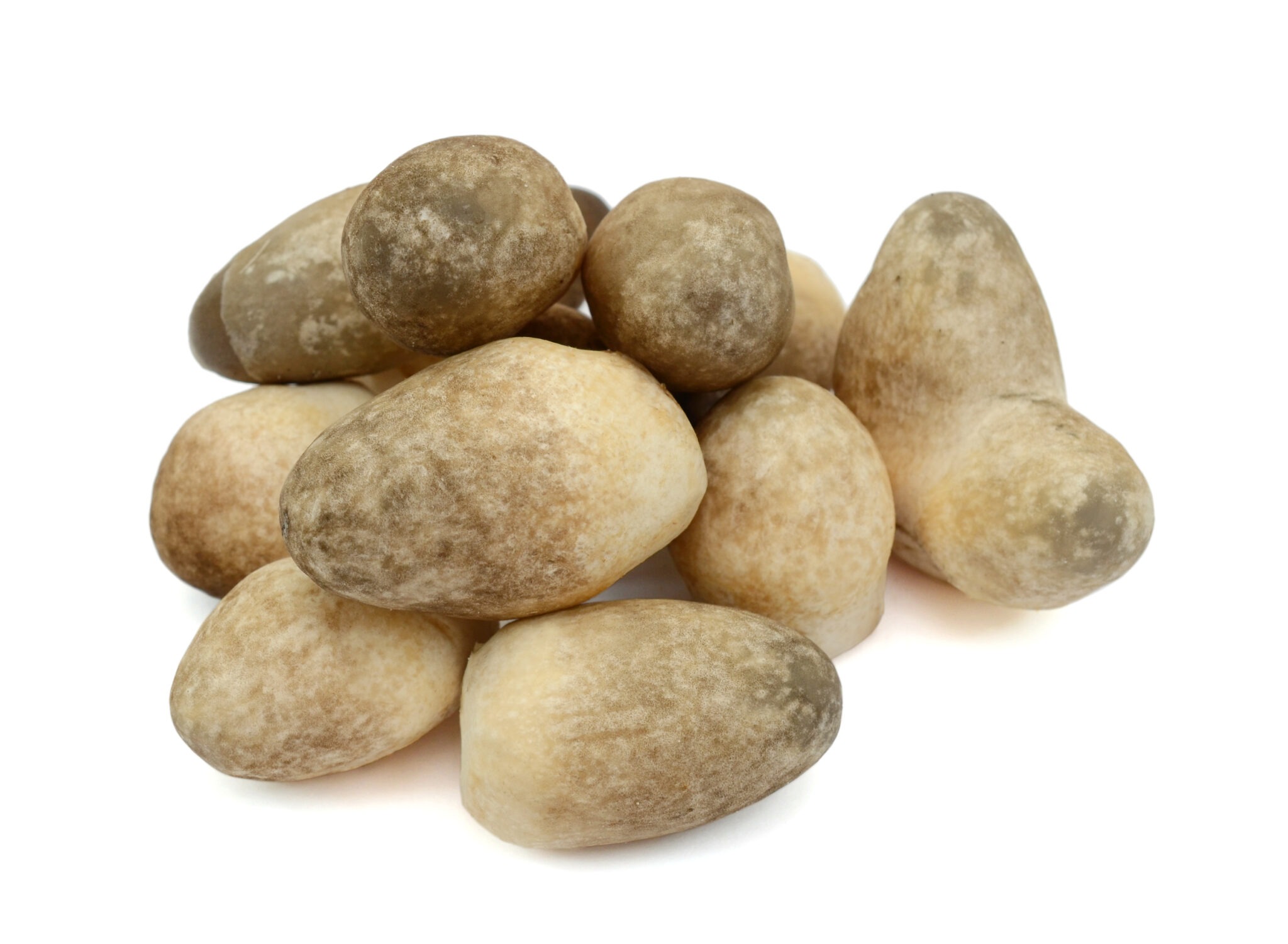Paddy Straw mushrooms summaryThe Paddy straw mushrooms have many common names like rice straw, straw mushrooms, and banana mushrooms. This mushroom is rich in vitamins and dietary fibers with no cholesterol. Health benefits of Paddy straw mushrooms
Side effects of Paddy straw mushrooms
|
Botanical name: Volvariella volvacea of the family Pluteaceae
Common name: Rice straw, Straw mushroom, Banana mushroom or Chinese mushroom, Shirokikurage
Cultivated in: Thailand, Philippines, Malaysia, Southern China, Southeast Asia, & Africa.
Paddy straw is the sixth most popular mushroom due to its high nutritious value, unique aroma, texture, and delicious taste. This mushroom is available throughout the year and can be easily purchased. It is a fast-growing mushroom compared with most other cultivated mushrooms (1).
It can be grown using agricultural wastes such as paddy straw, cotton waste, banana leaves, sugarcane, bagasse, rice straw, and pulses straw (2).
This mushroom was first cultivated in China by Buddhist monks around the 18th century. In India, this mushroom was cultivated as early as 1943 (3). Paddy straw mushroom contains significant pharmacological properties, including antitumor polysaccharides, immunosuppressive proteins, and immunomodulatory lectins.
Nutritional value of Paddy Straw Mushrooms
It contains medicinal properties and functional foods for human health with no cholesterol, starch, glycogen, and high level of proteins, vitamins (vitamin C, riboflavin, biotin, niacin, and thiamine), and a source of dietary fiber. Other than this it also contains fourteen amino acids, seven are essential, while methionine, arginine, histidine, and serine are absent (4).
Health benefits of Paddy straw mushroom
1. Paddy straw mushrooms are rich in nutrients
These are rich in carbohydrates, proteins, fiber, minerals, and vitamins. The protein content of mushrooms is much higher, more nutritious, and yields eight amino acids at concentrations that are higher than those in meat, fish, vegetables, or citrus fruits. Therefore it is a promising functional food item to fight against malnutrition (5).
2. Paddy straw mushrooms inhibit cancer cell proliferation
Beta d-glucan and lectin found in paddy straw mushrooms inhibit the proliferation and growth of various tumor cells such as sarcoma, colorectal, and leukemia (6).
3. Lowers cholesterol level
It contains a high amount of antioxidants mainly phenolic acid which prevents lipid peroxidation and decreases blood cholesterol, low-density lipoprotein (LDL) cholesterol, and triglycerides levels in the blood (7).
4. Controls blood pressure
Paddy straw mushroom is a rich source of natural bioactive compounds which reduce blood pressure and prevent hypertension. Thus this mushroom has hypotensive properties which reduce blood pressure and risk of cardiovascular disease (8).
5. Paddy straw mushrooms help in managing diabetes
Polysaccharides, β-glucans, lectins, lactones, terpenoids, alkaloids, sterols, and phenolics found in paddy straw mushrooms restore pancreatic cell function to increase insulin input thus reducing blood glucose levels and improving glucose tolerance (9).
6. Immunomodulatory properties of paddy straw mushrooms
Modulation of the immune system by various agents may have the potential for the management of certain infections, autoimmune diseases, graft rejection, as well as neoplastic diseases.
Paddy straw mushroom contains a protein known as Fip-vvo which possesses immunomodulatory properties and protects from various chronic diseases (10). Furthermore, lectin present in paddy straw mushrooms also possesses immunomodulatory activity (11).
7. Rich in antioxidants
Paddy straw mushroom contains a significant amount of glutathione, lycopene, phenolics, flavonoids, carotenoids, vitamins (A and C), and ascorbic acid. These compounds possess high nutritional and therapeutic values and also be a promising medicine against several oxidative stress-mediated disorders (12).
8. Antimicrobial properties
This mushroom is a rich source of tannins, flavonoids, triterpenoids, anthraquinones, and alkaloids which act against different bacteria such as Staphylococcus aureus, Klebsiella pneumonia, Pseudomonas aeruginosa, and Streptococcus pyogenes (13).
9. Paddy straw mushrooms help in liver protection
Paddy straw mushrooms (500-1000 mg/kg) contain a high amount of antioxidants which scavenge free radicals from the body and prevent liver destruction by hepatotoxic agents (14).
10. Improve flavor and nutritious value
The addition of paddy straw mushrooms in other food products such as Cantonese sausages and brown rice improved the flavor nutritious value and overall quality of the products (15, 16).
Side effects of Paddy straw mushroom
1. Presence of toxin
It contains heat-labile cardiotoxic proteins known as volva toxin. This has numerous effects such as lysis of human red blood cells, swelling of tumor cells and the mitochondria of liver cells, inhibition of protein biosynthesis, and causing cardiac arrest (17).
However research studies suggested that the toxin volvatoxin A2 can be used for the treatment of solid tumors because it has no toxicity to the animal, but with the ability to target a tumor (18).
2. Risk during umbilical cord blood transplantation
Research studies supported that patients who suffered fungal infections caused by paddy straw mushrooms during umbilical cord blood transplantation may be due to inhalation of fungal spores. Thus it acts as an etiologic agent of invasive disease and even death (19).
3. Risk of Heavy metal toxicity
This mushroom may accumulate heavy metals such as lead due to metal uptake from the contaminated substrate and not be safe for human consumption.
This lead accumulation can cause devastating health effects such as neurological damage, blood disorders, hypertension, and renal impairment. Therefore, precaution should need before consuming mushrooms grown on metal-contaminated substrates (20).
Edited By: Dr. Asha Jyoti Bharati
